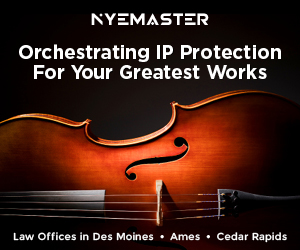Mystery shoppers take a second glance at customer service

On any given day, hundreds of people walk through the doors of Prairie Life Health & Fitness in West Des Moines, ready for a swim in the pool, a heart-pumping aerobics class or a quick jog. But employees have their guard up because they know that any one of these visitors could be there just to watch their every move.
Mystery shoppers infiltrate establishments such as Prairie Life each day, taking notes on everything from retail store décor to the length of their wait in a doctor’s office, all while going undetected by staff members. Not a stone is left unturned to provide a service that Prairie Life Club Manager Debby Hudson describes as a “love/hate thing.”
“It can be kind of discouraging when you feel like you’re doing everything right and you realize you’re not,” Hudson said. Mystery shoppers visit the club four times every month, secretly observing the staff’s attention to customers, ability to answer questions and the cleanliness of the facility, along with dozens of other items the club’s management wants to keep tabs on.
Companies have, for several decades, been using mystery shoppers as a cost-effective market research tool in which “shoppers” visit establishments in a variety of industries and complete surveys based on their experiences.
“What you’re looking at is a snapshot of what happens when someone comes into your establishment,” said John Swinburn, executive director of the Mystery Shopping Providers Association. “If it doesn’t mirror your expectations, what areas need improvements?”
Essman/Research in Des Moines offers mystery shopping along with other market research services. President and CEO Denise Essman said conducting client research through mystery shopping is cost-effective and can provide fairly quick feedback, compared with other market research tools. However, the decision to do mystery shopping depends on the client.
“When we meet with a client, they have data or information that they want to glean from the research,” Essman said. “So once we know what those are, we determine the best research design to gather that information.”
Essman/Research also conducts focus groups, telephone interviews and direct-mail surveys for its clients.
The company conducts on-site mystery shopping to research the clients themselves, as well as competitive shopping to research clients’ competitors. Essman said competitive mystery shopping is done primarily for clients out-of-town clients that either want to enter the market or research the market itself.
Essman’s is one of approximately 600 companies nationwide that offer mystery shopping services, according to Swinburn, though his association has not determined an approximate number of mystery shoppers. Some provider companies have as many as 300,000 shoppers in their databases.
According to the National Center for Professional Mystery Shoppers & Merchandisers, 89 percent of the shoppers are female and 85 percent are white. Most have another full- or part-time job, completing shops at their convenience. Some do shops daily; others might only do assignments once a month.
Mystery shoppers register with provider companies, which then arrange assignments with clients. Many providers post open assignments on their Web sites, with some making them available only through password protection. Shoppers conduct the research based on client-specific survey tools and typically submit their responses through an online form. The provider companies then process the information and release their findings to the client. Some companies even require shoppers to snap digital pictures during their visits to provide physical evidence of what they found.
“They really cater (the surveys) to what you want,” Hudson said of Prairie Life’s provider company. The club added an item to its mystery shopper form to determine whether the receptionist was greeting people as they came through the front door. Results from July mystery shops affirmed employees were meeting that expectation.
Swinburn said a program such as that in place at Prairie Life Health, in which mystery shoppers are utilized on a regular basis, has more value than one-shot uses of the technique, as certain elements might be present during a visit that could sway results, for the good or the bad.
Melissa Nixt, a wedding consultant at David’s Bridal in Clive, said the store received a less-than-desirable report after a mystery shopper visited during an extremely busy time of day. The shopper was not immediately greeted at the door and was eventually greeted by a store employee who was not wearing a name tag.
But the report gave Nixt and store management material for a bimonthly meeting in which they typically role-play situations from mystery shopping reports.
“We always try to make things better,” Nixt said, adding that mystery shopping has helped store managers emphasize to the staff the importance of getting to know each customer. “Being happy and having a positive attitude always makes a difference.”
Hudson also refers to mystery shopping reports during regular staff meetings at Prairie Life.
“Shopper reports are great, but they’re so much better if you can use them to help you,” she said.
All Prairie Life clubs compete for cash through mystery shopping reports. Each club has to pay the winning club $200, giving managers like Hudson money to use on staff events, giveaways and other incentives. But even if her club doesn’t win, she likes to reward the people who helped the club earn positive marks. She recently gave one personal trainer $40 when his exemplary customer service was noted in a shopper report.
“Whether we win or not, if somebody does something nice, I try to throw them some cash,” said Hudson.
Shoppers can simply be reimbursed for expenses, such as the cost of a meal while mystery-shopping a restaurant, or can be paid a flat rate for their services. According to the NCPMS, restaurants, retail establishments and banks or financial institutions are the biggest users of mystery shoppers. Mystery shoppers who visit restaurants are paid anything from the cost of a meal to as much as $35. Mystery shopping at a retail store pays $12-$30 and visiting a bank or financial institution can pay as much as $70.
Some provider companies leave potential shoppers with the impression that mystery shopping can provide them with a wad of cash, all-expenses-paid vacation and free meals and movies. But that isn’t the entire truth. The MSPA’s Swinburn said his organization is increasingly concerned about shady practices within the industry, specifically, provider companies that require their registered shoppers to pay for a list of available assignments.
“There are quite a number of scams that don’t provide information or don’t provide information that is readily available for free (elsewhere),” he said, advising potential mystery shoppers to ignore such offers.
The importance of integrity has been impressed upon shoppers as well. Many provider companies require shoppers to agree to follow the MSPA Code of Professional Standards and Ethics Agreement, which requires confidentiality, honesty, integrity and respect for the industry.
The industry adopted shopper certification in January 2003, which can be obtained through the NCPMS. Over the next five years, the NCPMS predicts, 80 percent of mystery shoppers will be certified. Laws were passed in Florida regarding the industry, and in Nevada, all mystery shoppers must be licensed private investigators.
Upholding those standards has become necessary in an industry that has exploded in the past decade, allowing clients to address customer service from an entirely new angle.
“It can provide some real-world experiential data of what the typical customer experiences,” Swinburn said. “It has the capacity to determine the areas that are outside the scope of the average. It can identify the unusual, good and bad. It can provide an absolute gold mine of information to a company executive to ensure that they are offering what they think they are offering. It enables a company to determine the return on its overall investment.”







